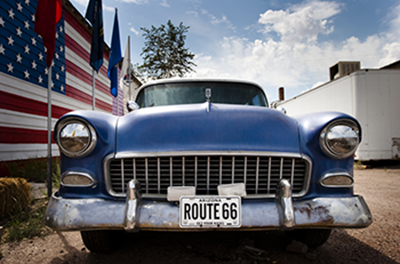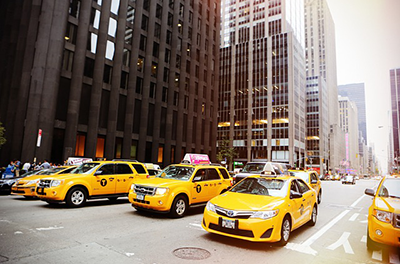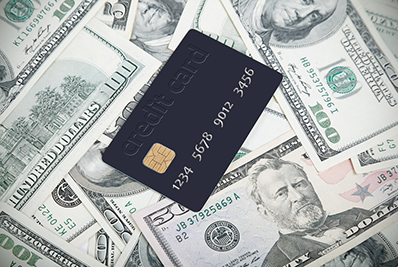
Living in the USA
Studying in the USA as an international student is a rewarding experience and you are very likely to become exposed to the American way of life. What can you expect and what should you know?
In this section, we are talking about different areas of living in the USA to help you get a better idea of what to expect. For instance, find out how you get a driver’s license, an apartment, or where you could go to buy branded clothes, shoes, apparel etc..
The following areas are covered below:
- Driver’s License
- Transportation
- Housing
- Banking
- Shopping
- Eating
___________________________________________________________________________________________
Driver’s License
As an international student you can obtain a US driver’s license by applying for one at the Department of Motor Vehicles (DMV). Each state has its own set of rules and requirements that will have to be met. Please visit www.usa.gov and click on the state that pertains to you. Also, the International Student Office at your university/college very often has all the information you need and will be happy to help you.
In general, you will have to provide the following documents when obtaining a driver’s license:
- Your passport, visa, and I-94 card (record of arrival/departure that should be attached to your passport)
- Your I-20 form (known as “Certificate of Eligibility”) if you are in F-1 visa status or DS-2019 if you are in a J-1 visa status
- Two documents proving where you live. This can be a utility (energy) bill, apartment lease (contract), tax forms, bank statement, and (in some states) a letter from the university/college confirming your address.
- Your Social Security Number (SSN) or document stating your ineligibility for SSN. If you do not have a SSN you still have to get documentation from the Social Security Office stating that you are ineligible, and then bring this with you to the DMV when applying for your driver’s license.

Additional requirement generally include:
- Filling in an application and pay the application fee
- Taking an eye exam
- Study the state’s driver’s manual
- Taking a written test
- Taking a road test (driving test)
When taking the road test you generally have to provide your own car and show proof of car insurance.
___________________________________________________________________________________________
Transportation
Since having a driver’s license in the USA is a right and not a privilege as in many other countries, the preferred mode of transportation in the USA is by car. Therefore, you should not expect the public transportation system in the USA to be up to the same standard as in maybe your native country.
Buses
In major cities and their surrounding areas, buses generally do not run as frequently as you probably are used to and it could turn out to be a rather expensive form of transportation. In medium size cities the price is likely to be more affordable. Unless you live in a major city (e.g. New York), the bus stops are also spread apart and the bus do not always arrive according to schedule. We must stress that you should not expect the public bus system in the USA to be like in most countries in Europe and in many countries in Asia where you can take a bus seemingly at any time. It is common for international students to be surprised that the buses are not running as often and that they are forced to walk relatively long distances to get to where they are going, despite taking the bus. Of course, using the bus may be a great solution for you if you live off-campus and you have a bus-stop directly or nearby your apartment/house that happens to go straight to campus. On a positive note, in almost all cities there will be at least one bus line that will go to the university/college. We advise you to check the available bus lines in the city/town where your university is located to see if it is an option for you.
For longer travels, there is an extensive bus network that can take you from city to city. Travelling this way is inexpensive compared to travelling by train or by air, but since a bus will make frequent stops along the way it will take considerably longer to get from point A to point B. The largest service provider is Greyhound (www.greyhound.com).

Taxi
Taxi is available everywhere and you can both reserve one or wave one in from the street. Price varies depending on where you live but in general taxi is not overly expensive. As in most countries, a few drivers will drive a longer distance than necessary to get you to your destination, especially if they can see that you are new to the area. A good way to get around this is to ask the driver to drive on major roads that you have look up beforehand. Another smart trick is to put on the GPS on your smartphone and see how the driver has driven – it will show you if the driver has driven in a circle or gone in the opposite direction on purpose.
Subway (also called metro)
Taking the subway (underground trains operating within greater city limits) is normally a quick and effective way of getting around in a city. You will only find subways in certain major cities and the cost for a ticket can be rather high. However, among city dwellers it is many times the preferred mode of transportation.
Trains
Although the primary purpose of trains today in the USA is for freight shipments, not providing passenger services, there are still plenty of options available to you. Amtrak is one of the largest passenger train service providers (www.amtrak.com). Keep in mind that the train is not always a faster alternative to driving, as it generally is in other countries. Also, in certain areas of the US when you buy a train ticket it does not mean that your entire travel will be by train. It is not uncommon for part of your travel to also be by bus.
___________________________________________________________________________________________
Housing
Apartment
Renting an apartment in the USA as an international student is normally not that difficult. Generally you have to pay the first month’s rent plus one month’s rent in deposit before you can move in. Since you are an international student and will not have a credit score, they will require seeing some proof of income or funds. This could take the form of a bank statement showing that you have money or, if you receive funds from a private or government source, an award letter proving your income. Generally landlords offering student accommodation will be aware of international students and will inform you what they need. The International Student Office at your university/college will normally have more information or even a list of landlords in your area.
Dormitory (on-campus housing)
Living in the “dorm” is another popular option. Normally, you will indicate on your application form if you want to be considered for on-campus housing. It is very competitive and the earlier you send in your application the better. Single-rooms are available (more expensive), but normally you share a room with one or more students. You also usually have the option of purchasing a meal-plan. Living in the dorms is a great way to meet other students and often there is free internet, a study hall, common area, and other facilities and services available. At some institutions the dorms are coed (both for male and female) while at others the dorms are separated according to gender.

Host Family
Living with a host family is another option for many international students. You will rent a room and live with an American family. Host families are usually approved and coordinated by the university/college. If you are interested in this option then contact your institution’s admissions office or International Student Office for more information.
___________________________________________________________________________________________
Banking
The myriad of services offered by banks would take an entire website to explain, therefore we will here give brief information that will more than likely apply to the majority of international students.
First of all, you will be able to open a bank account and you do not need a SSN (Social Security Number) to do so. It is very likely that your university/college already has a list of preferred banks that are used to helping international students open a bank account. You are very likely to open a so called “checking account” – an account with a check book where you will normally have your income paid into and use to pay your bills. You will not necessarily receive a credit card but you will in most cases receive a debit card connected to VISA, MasterCard, or American Express. This will allow you to make payments online, wire money (for instance, transfer money from your bank in your native country to you US bank account), withdraw money from ATM’s (cash machines), and make in-store purchases.

Each bank is different but in general you should bring with you the following documents when opening a bank account:
- Passport
- Visa
- I-20
- I-94
- US driver’s license (if you have one)
Also remember that you typically have to make a deposit at the same time as you open your account. Normally there is no specific amount required so you can bring $20 and use that as your first deposit. As with any bank, it will take a few weeks before you will receive your check book and bank card in the mail. Many banks in the USA offer drive-thru banking, meaning you can do you banking business from your car, similar to ordering from a drive-thru window at a fast-food establishment.
___________________________________________________________________________________________
Shopping
There are many shopping opportunities available to you in USA, including:
- Shopping Mall
- Outlet Mall
- Department Store
- Discount Store
- Supermarket
Shopping mall (also known as “mall”) is a place of one or more buildings where you will find both independent stores, larger chains, and other ventures such as restaurants and entertainment options (for example, movie theater). Regardless if it is an outdoor or indoor mall, the stores are placed next to each other and are connected by walkways. Shopping malls are usually found in the suburban communities.
Outlet mall (also known as “factory outlet”) is very similar to a shopping mall except here the stores normally consist of manufacturer-branded stores, such as Nike, Gucci, Ralph Lauren etc., where the brands sell products at a cheaper price. The prices are around 20%-40% below department store prices. Outlet malls are usually found outside of most major cities. In short, outlet malls are a good place to find brand shoes or clothing.
Department store is a large store that provides a variety of products and brands (for example clothes, appliances, jewelry etc.). Popular and large department stores in the USA are Macy’s, JCPenney, Nordstorm, Saks Fifth Avenue, and Barney’s.

There are also department stores that sell products at heavily discounted prices, such as Marshall’s, Ross and TJ Maxx. These stores sell branded products (clothing, shoes, perfume etc) at a cheap price.
Discount store is a store that provides products at very low prices. The stores provide a range of different products including food, clothing, electronics, and some of them even have a fresh grocery section. Examples of these stores are: K-Mart, Wal-Mart, Target, and 99 Cent Store. These stores are usually accessible across the entire USA within city limits.
Supermarket is large grocery store. These stores provide a wide range of food and household products. Examples of stores are: Safeway, Food4Less, Costco, and Sam’s Club. There are also many independent supermarkets and state or intra-state supermarket chains (not national coverage). You are bound to discover these when going grocery shopping.
Food prices in the USA are relatively low and you will find that many of the food products come in larger sizes than you may be used to in your native country. As in most countries, eating healthy tends to be more expensive. You are very likely to find grocery stores that are open 24 hours in most US cities.
___________________________________________________________________________________________
Eating
The American food culture is shaped by the fast pace environment that is present in the USA. You have probably heard the American expression, “time is money.” This mentality shapes people’s eating habits and although Americans do socialize during meals, both at work and at home, it is generally not to the extent that maybe you are used to from your country. Eating at restaurants is relatively cheap, resulting in people preferring this option in contrast to spending precious time cooking at home. The biggest benefit of the American dining culture is that there is a restaurant for everyone’s wallet, taste, and time schedule. In short, there are three types of restaurants in the USA: fast food, casual dining, and fine dining.
Fast food restaurants are very popular and there exist many large national fast food chains in the USA, as well as regional chains. You are even likely to find one or two fast food chains on your university/college campus. Typically, fast food restaurants does not offer table service, and customers simply order, pay, and receive the food at the counter before either sitting down in the restaurant or take out. Most, if not all, offer a drive-through (also commonly spelled as “drive thru”) that is open 24 hours. Although prices vary, you are likely to get a meal for around $5.00. Some of the larger and better known fast food restaurants in USA are: McDonald’s, Wendy’s, Taco Bell, Subway, Burger King, KFC, and Pizza Hut.

Casual dining restaurants are restaurants that typically provide table service and offer food at moderate prices ($6-$12). Many casual dining restaurants in the USA are national chains and are located in many cities around the country. You are often served large portions and many people often take any left overs with them. This is called a “Doggy bag”. Examples of casual dining restaurants in the USA are: Applebee’s, Chili’s, Denny’s, Olive Garden, Red Lobster, Red Robin, and IHOP.
Fine dining restaurants provide full service to its customers, meaning they have table service, large assortment of alcoholic drinks (especially wine), and prepare food to order in a wide range of prices and qualities.
Staffs are typically highly trained and provide professional service. The food is visually appealing and the prices are more expensive than in casual restaurants. Fine dining restaurants are often independent establishment (not part of a national or regional chain) and are found in all areas of a city or town. In major cities you will also find high-end gourmet restaurants with star chefs.
Tipping is a common custom in USA and this should be applied when you are eating at a restaurant. The amount is usually between
10-15% but varies depending on state, so make sure to find out what the acceptable tipping percentage is in your state. Some restaurants automatically add a so called "service charge" to your bill. This is typically set at 15% and is a form of “forced” tipping. Often you have the option to ask that the service charge be removed from you bill, but it is not common practice or popular.
© 2017 Study Destination USA. All Rights Reserved.
